Expanded Metals
Expanded metals are created by taking plate or sheet metal and perforating it with a series of slits along parallel lines. The metal is then pulled or stretched into a mesh, often expanding to as much as ten times its original width. The degree of expansion depends on the length of the cuts, the width of the metal between the cuts, and how much stretching is applied. This process results in a lightweight and cost-effective alternative to solid plates or sheets, while maintaining the integrity of the material, ensuring it won't unravel.
The perforation lines may be arranged in a staggered pattern to maximize the open area once stretched, or they may be evenly spaced. While the most common metal mesh pattern is diamond-shaped holes, other patterns can be created as well. The measurements of the mesh are typically based on Long Way Diamond (LWD) and Short Way Diamond (SWD) specifications. The size and shape of the openings will vary based on the specific requirements of the intended application.
Expanded metal was invented in 1884 by John French Golding in Hartlepool, UK. Initially developed as metal grating for sorting coal in mining, it replaced earlier sorting methods that used woven wires or strips of metal. Golding's expanded metal screens, made from a single sheet, were more durable and maintained uniform open areas over time.
In 1889, Golding partnered with W.B. Close, Mathew Gray, Christopher Furness, and Robert Irving Jr. to establish the British Metal Expansion Company, which held exclusive rights to expanded metal manufacturing across Europe. By 1894, the company was renamed the Expanded Metal Company Limited, based in London.
In the 1890s, American industrialist Eli Hendrick created a metal punching machine, leading to the development of the modern perforating punch. This innovation made the production of expanded metal more efficient, benefiting mining operations and also boosting the construction industry, as the mesh proved to be an excellent material for plaster and stucco wall lathing.
The first U.S. patent for expanded metal was granted in 1910 to Charles H. Schrammel, whose improvements included angling the mesh dividers to give the surface a gripping texture and devising a method for rolling up the metal sheets, making them easier to handle.
Although demand for expanded metals grew over the years, its applications expanded rather than the product itself, with only minor changes. In the early 20th century, expanded metal was widely used in construction, but its popularity decreased as plastics and other modern materials emerged.
In the early 2000s, digital perforation technology was introduced, though the basic process of creating expanded metal remains similar to its original form.
Between 2005 and 2015, an architectural revival brought decorative expanded metal products, such as gates, window coverings, and building facades, back into fashion.
Expanded metals are an economical solution, as they allow for the creation of a larger surface area from a solid sheet of material, using less metal to achieve the desired result. This process eliminates waste, making it highly efficient. Just as sewing patterns are designed for optimal use of fabric, the patterns for expanded metal products can be designed for maximum material utilization.
Due to its continuous structure, expanded metal is highly effective at conducting electricity, heat, and magnetic flux. Its solid form also provides reinforcement for materials like concrete and glass, offering strength while keeping the weight minimal. With its high tensile strength, expanded metal is often preferred over woven metals and welded joints for many applications.
The perforated nature of expanded metal allows light and air to pass through freely while offering protection against the sun, as well as shielding from falling or flying debris and providing privacy by blocking sightlines.
Maintenance for expanded metals is minimal. As a single, solid unit with no moving parts, it requires no special care other than occasional washing and, if necessary, scrubbing with an appropriate brush and cleaner.
Solid metal sheets or plates of varying thickness are fed into an expansion press that simultaneously slits the metal along thin lines. Mechanical knives facilitate the cuts, ensuring uniform slits for consistent openings. A stretcher bar then pushes the metal outward, forming voids in the perforated metal, which are connected by unbroken lines known as bonds and strands. Expansion presses can be either manually operated or automated CNC systems.
Once the sheet has been perforated and stretched, it may be sent for sizing or cold-rolled to achieve a flat and smooth finish. The flattening press, consisting of parallel cylinders, squeezes the plate as it rolls between them. After the desired smoothness is achieved, the sheet is cut to size, and additional treatments like PVC coating, paint, anodizing, or other veneers may be applied. The metal may also undergo annealing or be treated for corrosion resistance at this stage.
The pattern and size of the holes depend on the intended application of the metal product. For example, walkways are often made from carbon steel, with diamond-shaped openings in the grating. The cuts may be two inches long, resulting in openings with one-inch LWD by half-inch SWD once the stretching process is complete. For metal fences, larger apertures can be created by making longer cuts along finer lines. Variations of the diamond pattern can be achieved by using alternate slit lengths or widths or by employing differently shaped knife blades.
Standard expanded metals can be made from various thicknesses of metal plates or sheets, with a range of opening sizes. The SWD bonds and LWD strands that separate the apertures are set at a uniform angle, increasing rigidity while maximizing flow. Since the metal remains a single piece, it provides significantly higher tensile strength compared to woven wire of equal weight.
Cold rollingthe expanded sheets further smooths the surface, extending the length of the material by as much as five percent.
It’s important to note that perforated metals, unlike expanded metals, are solid metal sheets with specific hole designs punched out, without any stretching involved. While their uses are similar, expanded metal sheets are lighter, inch for inch, and offer greater flexibility.
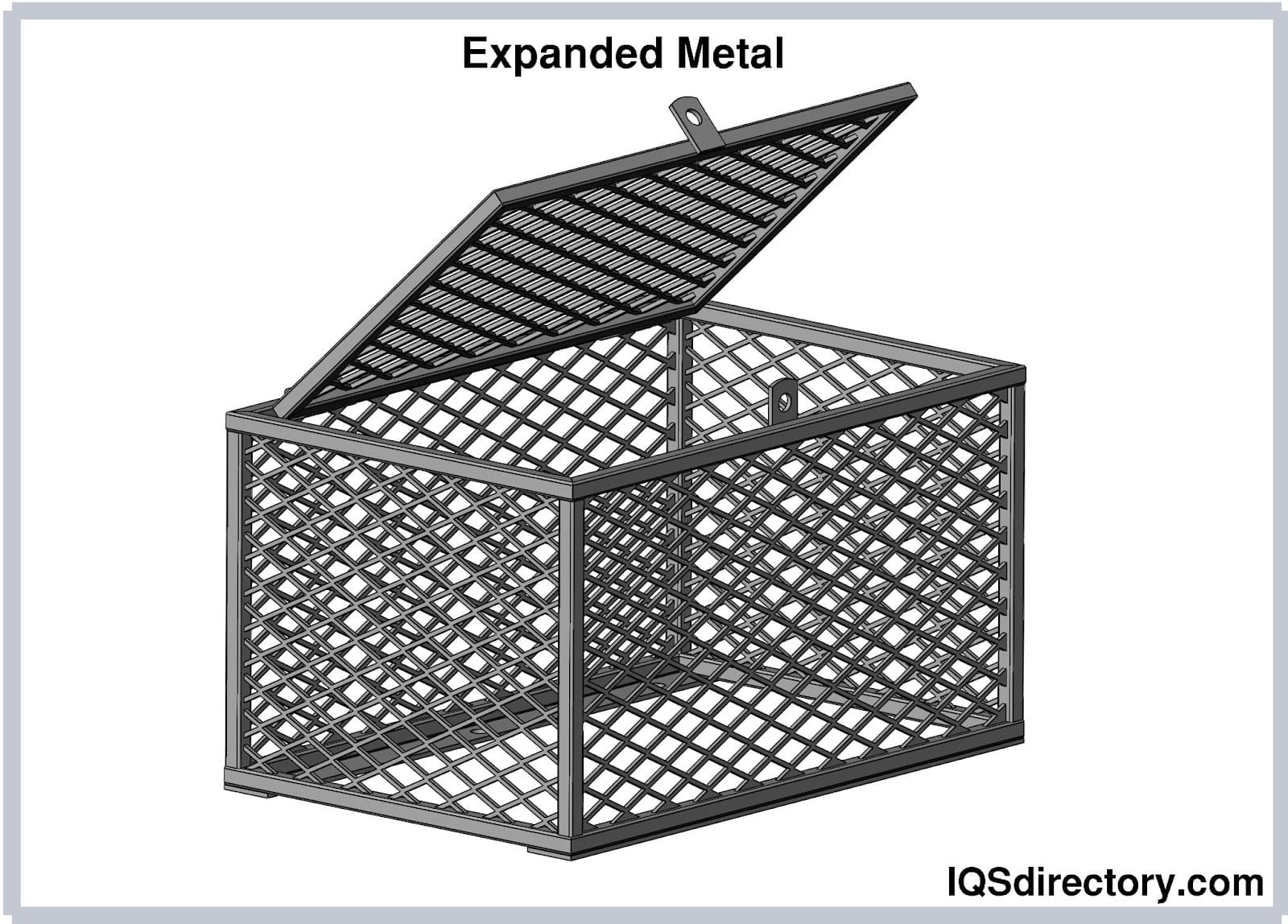 Expanded metal is a sheet metal mesh, made by stretching slitted sheets of malleable metal.
Expanded metal is a sheet metal mesh, made by stretching slitted sheets of malleable metal.
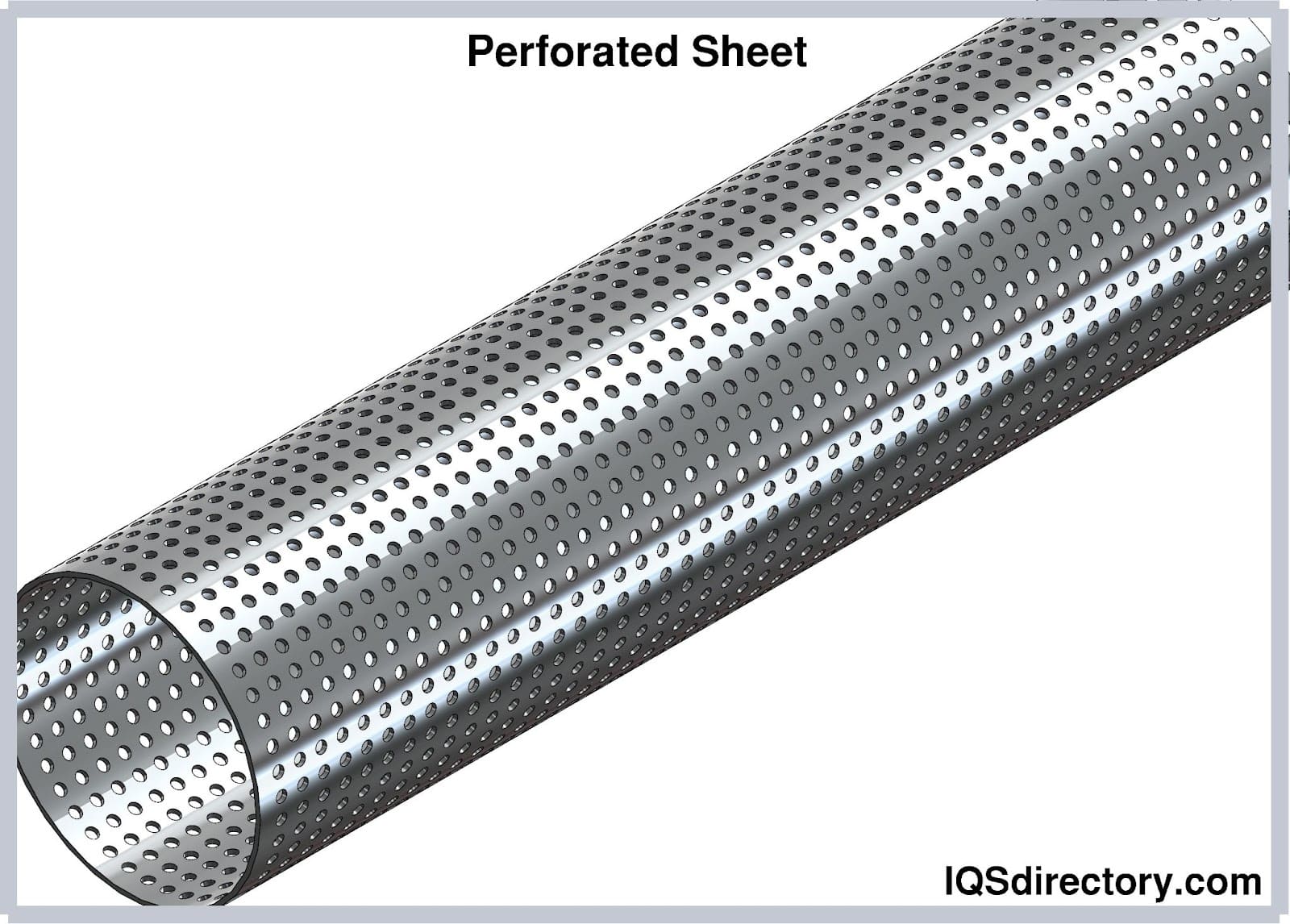 Perforation Sheet is a metal sheet punched with holes.
Perforation Sheet is a metal sheet punched with holes.
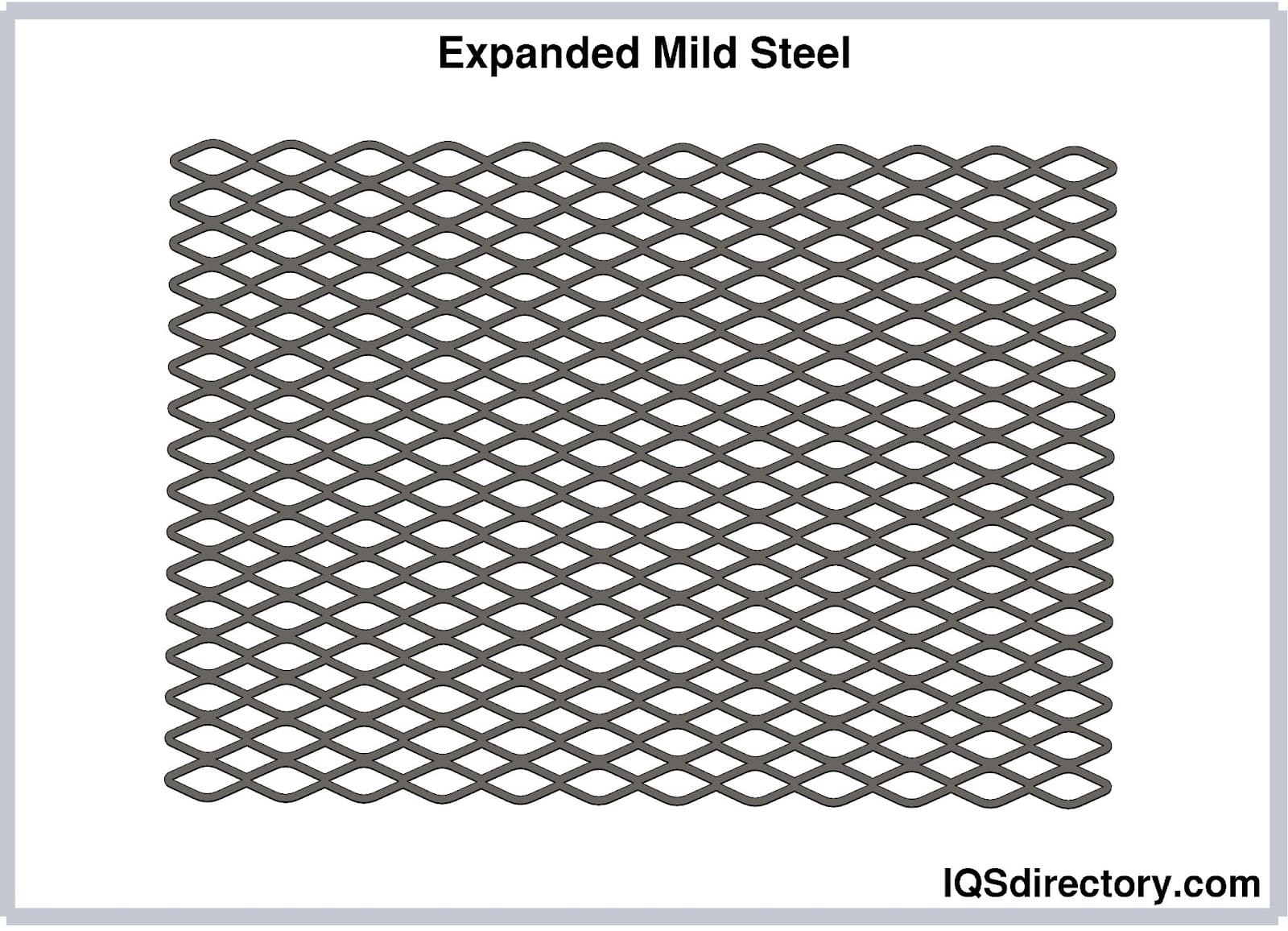 Malleable metals can be expanded, however many are not viably for industrial scale. Steel is the most common with it high strength and is cost-effective.
Malleable metals can be expanded, however many are not viably for industrial scale. Steel is the most common with it high strength and is cost-effective.
 Dimensions of the mesh must include the total area, thickness, and the size of the cut for the mesh.
Dimensions of the mesh must include the total area, thickness, and the size of the cut for the mesh.
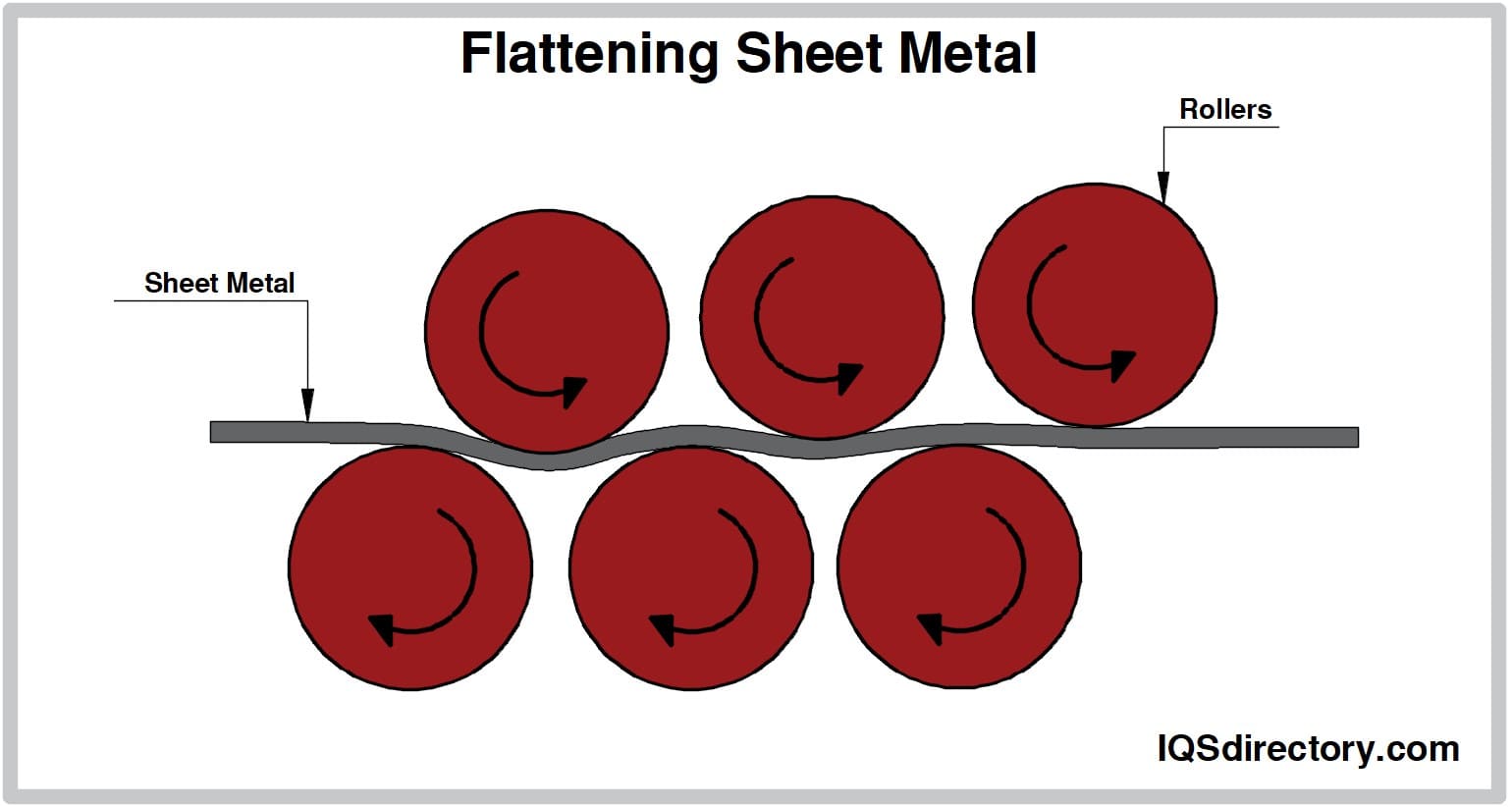 This process gives the expanded metal a flat surface finish, where such is desirable, which leaves a ridged surface or a rippled finish on the expanded metal.
This process gives the expanded metal a flat surface finish, where such is desirable, which leaves a ridged surface or a rippled finish on the expanded metal.
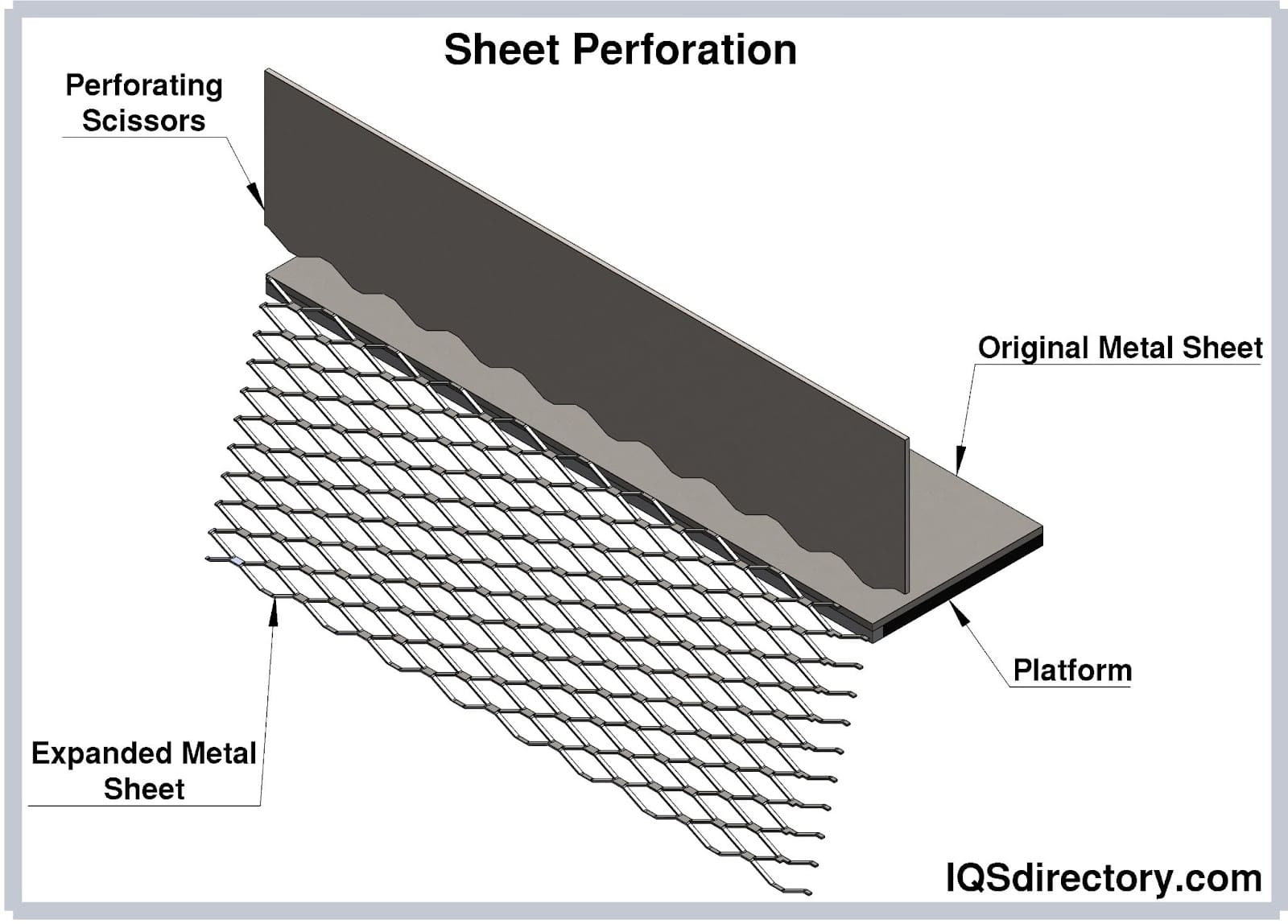 The thickness of the strands influences the percentage of open spaces on the metal sheet.
The thickness of the strands influences the percentage of open spaces on the metal sheet.
-
Copper Expanded Metal
A sheet or plate made of copper or its alloys, such as brass or bronze, which is simultaneously slit and stretched to create an open framework of solid construction.
Expanded Aluminum
Created when aluminum sheets or plates undergo a machining process where they are cut and stretched simultaneously, resulting in an open grid structure of the silvery-white metal.
Decorative Expanded Metal
Available in various mesh patterns beyond the standard diamond shape, and can also be produced using more decorative metals like copper or silver.
Expanded Metal Fence
A type of fencing made from expanded metal, offering strength, safety, durability, and aesthetic appeal not commonly found in other fencing types.
Expanded Metal Mesh Grating
Used for walkways and platforms designed for pedestrian foot traffic.
Expanded Metal Mesh
Used when smaller openings are required, such as in filters.
Expanded Metal Products
Include all items made from or with components of metallic elements or alloys that undergo a machining process known as expansion, which simultaneously cuts and stretches the material.
Expanded Metal Screens
Composed of a surface of light gauge sheet metal that has been slit and stretched to create a uniform pattern of small openings.
Expanded Metal Sheets
A framework of interlinked bars forming a uniform pattern of open spaces, created through the simultaneous cutting and stretching of alloyed metal plates.
Expanded Steel
Available in various strengths and used in applications ranging from walkways and fencing to corner netting for plaster and drywall.
Flattened Expanded Metal
Cold-rolled after expansion to create a smooth, flat, and level sheet. The metal’s thickness is reduced by up to ten percent during this process.
Mini Mesh Expanded Metal
Features very small openings compared to other types of expanded metal or mesh.
Stainless Steel Expanded Metal
A highly corrosion-resistant sheet, mesh, or grate, solidly constructed for use in environments involving volatile chemicals or requiring hygienic cleaning.
Titanium Expanded Metal
A framework of interlinked bars with uniformly patterned open spaces, made from titanium, a material known for its exceptional strength and durability.
Unflattened Expanded Metal
Comes directly from the press with a raised pattern. The strands and bonds are set at a uniform angle to the sheet's plane.
Expanded metals serve a wide range of purposes, including filtering light, air, water, materials, sound, and even the view. They are commonly used for decking, fencing, screening, lath, and decorative applications. Expanded metal can be crafted from various materials, such as aluminum, steel, mild steel, carbon steel, stainless steel, copper, or even plastics. Additionally, different finishes can be applied based on the desired design.
Expanded metal offers a versatile and cost-effective fabrication option for numerous projects and can be found in many everyday applications. Common uses include fences, vents, grating, and filters. PVC-coated mesh is often used in public spaces for picnic tables, playground equipment, seating, barriers, and partitions. As architectural screening, it maintains airflow and light penetration while providing visual interest or camouflage through variations in the mesh pattern, surface shape, and finish.
Historically, expanded metal has been used as metal lath for plaster and stucco underlayment. Engineers have also recognized its benefits in commercial construction, where it serves as a lightweight outer skin. This approach reduces energy costs, lowers exterior maintenance, and allows for the creation of aesthetically appealing, multi-dimensional exteriors.
Expanded metal products also provide excellent non-skid, aerated, drained, or raised flooring, making them ideal for decking on walkways and bridges. It is commonly found on catwalks and stair treads for maintenance access to buildings like grain silos
, wind, water, and radio towers.
In industrial settings, expanded metals are used to build cages, shelves, lockers, cabinets, storage units, and safety barriers. These products are known for being strong, lightweight, durable, fireproof, transparent, and easy to maintain.
Heavy-duty metal grates or fences offer greater strength than wire mesh barriers and can be custom fabricated to fit various configurations, providing enhanced safety and security. Metal grating is also used in sorting mixed materials, such as ore, or filtering debris, as seen in storm drains.
Artists use expanded metals to create airy, lightweight sculptures or as a base for projects involving papier-mâché, plaster, clay, metal, or wax. The flexibility of the mesh saves material, reduces waste, and often cuts down on time and costs.
Expanded copper, being electrically conductive, is ideal for forming Faraday cages to protectagainst lightning and shield from Radio Frequency Interference (RFI). It is used in spark arrestors for chimney caps and can also deter garden pests, as slugs and snails dislike its texture. Rodents cannot chew through it, and birds struggle to peck large holes in the material.
Micro-mesh expanded foils are made from lighter gauge metal sheets with tiny slits, resulting in small openings suitable for filtration systems
. These foils are flattened into thin, polished sheets that can be used for air or liquid filtration, acoustic screening panels, speaker covers, and soundproofing. They also provide ventilation while maintaining visual privacy. These micro-mesh foils are typically made from stainless steel, brass, or aluminum.
Micro-mesh foils made from premium metals like titanium, niobium, zirconium, and platinum are used in applications such as fuel cells, hydrogen and oxygen generation, and batteries. These foils are extremely thin, with material thicknesses as small as 0.001 microns.
Most hardware stores, hobby and craft stores, and some department stores offer a limited selection of standardized expanded products. These might be sufficient for simple tasks, such as blocking a hole to prevent mice from entering or creating a cage around a prized plant. However, for larger projects that require structural integrity, scientific precision, or high security, it's best to consult a specialized manufacturer.
Many applications require adherence to specific standards, such as ASTM, ANSI, or FDA regulations. It's important to understand any relevant regulations that apply to the intended use of the material. A skilled manufacturer with an experienced design team can assist in determining the best materials for the job and provide informed recommendations.
The design team will help select the appropriate metal, plate or sheet thickness, hole size, and configuration to ensure maximum effectiveness and efficiency for the project. They will take the time to understand the client's needs and project scope, ensuring timely delivery of high-quality products at a reasonable cost. Additionally, they will stand behind their products and services, ensuring customer satisfaction throughout the entire process.
-
Blank to Size
Custom-sized expanded metal part made to meet the customer's specific requirements.
Bond
The solid intersection where two strands of metal meet in expanded metal.
Bond Edge
The manufactured closed perimeter diamond.
Coil Product
Expanded metal produced as a continuous coil, rather than in individual sections.
Diamond or Opening
Refers to the open area formed by the strands and bonds, typically shaped like a diamond.
Leveling
The process applied to all expanded metal products, excluding grating, to flatten them after expansion.
LWD
Long way of diamond (LWD) or long way of opening, the dimension measured across the sheet in the direction parallel to the largest dimension of the diamond.
Mesh
The nominal distance from the center of one bond to the center of the next bond, measured across the SWD, and expressed in inches.
Percent Open Area
The total open area in a section of expanded metal, calculated by multiplying two times the strand width, dividing by the short way of diamond (SWD), and then taking the inverse of the resulting number.
SWD
Short way of diamond (SWD) or short way of opening, the dimension measured across the sheet in the direction parallel to the smallest dimension of the diamond.
Strand Thickness
The thickness of the base metal before it is flattened.
Strand Width
The measurement associated with the thickness of one strand of metal.

